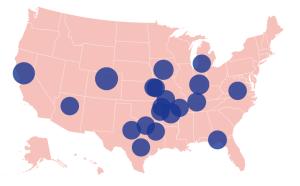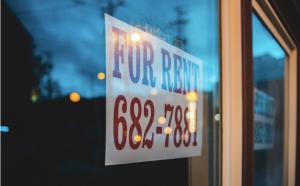Here's what else needs to be done to help renters during the pandemic
President Joe Biden's $1.9 trillion rescue proposal unveiled last month includes a host of measures to buoy struggling renters as the coronavirus pandemic drags down the economy and financially devastates American households.
His recent executive action to extend a federal eviction moratorium through March also helped to address the housing crisis.
If implemented, his rescue plan includes $30 billion in rental and utility assistance along with an additional $5 billion in emergency assistance to help those on the brink of homelesseness.
“Certainly the dollars included in the proposal are substantial in addition to the $25 billion passed in the last stimulus package,” said Noelle Porter, director of government affairs at the National Housing Law Project, a housing nonprofit.
But experts worry about how long it could take for Biden’s proposal to pass and how soon the eviction moratorium will lapse, all while many Americans continue to struggle.
“It’s great that there’s money being proposed but how do we move the money as quickly as possible because already — due to the political fights — the second stimulus was delayed until December,” said Mark Wolfe, executive director at the National Energy Assistance Directors Association.
Wolfe, whose work focuses on energy and water assistance for millions of Americans, also is concerned how much of the $30 billion in rental and utility assistance would be allocated to those who owe utility bills.
“There’s not enough money proposed for energy assistance,” he said. “They said you could use rental assistance to pay back rent and and utility bills, but it’s not clear how money administered will go to energy.”
Since March, lawmakers such as Rep. Rashida Tlaib (D-MI) have requested a $1.5 billion low-income water assistance fund that includes moratoriums on both water and power shut-offs.
Despite Biden’s moratorium extension for evictions, experts remain concerned if the tenant has been relieved of eviction possibilities even after this date has passed and back rent has been paid.
“It seems implicit because there’s a moratorium in place, but there’s going to be tons of landlords that because tenants didn’t pay last month and only the arrearages till date, they might be evicted,” Porter said. “If this $25 billion only pays down 10% of everyone’s rent, then we’d want to see more of the burden relieved.”
Porter’s organization hopes landlords will receive the back rent relief and slow down their efforts to evict tenants.
A last concern includes administrative roadblocks, which have previously resulted in some states running out of funds as early as in 90 minutes during the first round of rental relief.
This time around Wolfe argues that math may be the culprit.
“Here’s the problem at 5,000 feet above the sky for a family to sign up for energy and rental assistance may look fairly straightforward, but the rental program uses area wide median income whereas energy uses the federal poverty level,” Wolfe said, whose calculations find that the proposed bill can help 5 million households.
The area median income otherwise known as AMI is the household income for a median household in a region. Every year the Department of Housing and Urban Development calculates this metric. The U.S. Census Bureau is responsible for creating the federal poverty level data.
“Local administration agencies are already overwhelmed with requests for help,” Wolfe said. “This is one more step that will have to be calculated.”
Dhara is a writer for Cashay and Yahoo Money. Follow her on Twitter @dsinghx.
Read more information and tips in our Renting section




